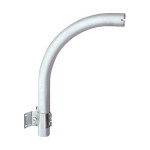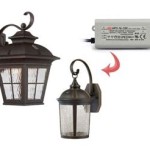How To Make Large Outdoor Planters
Large outdoor planters offer a multitude of benefits for any outdoor space. They can be used to create striking focal points, define areas, and add pops of color and texture. Whether you're looking to enhance your patio, garden, or even entryway, crafting your own large planters can be a rewarding and cost-effective project. This guide will provide you with comprehensive instructions on how to make these eye-catching additions to your landscape.
Choosing Your Materials
The first step in creating large outdoor planters is selecting the right materials. The ideal material will depend on your desired aesthetic, budget, and the weight you're comfortable working with. Common options include:
- Concrete: Offers durability and can be molded into various shapes. However, it requires more extensive preparation and can be quite heavy.
- Wood: Offers a natural, rustic look and can be easily customized. Depending on the wood type, it may need to be treated for outdoor use.
- Metal: Provides a modern and sleek aesthetic, often coming in pre-made forms. However, metal planters can get very hot in direct sunlight.
- Recycled Materials: Offers an eco-friendly and unique approach. Old tubs, barrels, or even large pots can be repurposed as planters.
Consider factors like the size and weight of the materials, their resistance to weather conditions, and how well they'll complement your existing landscape. It's also essential to factor in the drainage requirements of your plants.
Building Your Planter
Once you have chosen your materials, you can proceed with building your planter. The specific process will vary depending on the material you select. Here are a few general guidelines:
For Concrete Planters:
- Prepare the Mold: Create a mold using plywood, plastic, or other suitable materials. Ensure that the mold is strong enough to withstand concrete pressure.
- Mix the Concrete: Follow the manufacturer's instructions for mixing the concrete. You may need to add aggregates or other materials to achieve the desired texture.
- Pour the Concrete: Slowly pour the concrete mixture into the mold, ensuring it fills all corners and edges. Use a trowel or other tools to smooth the surface and create a desired texture.
- Cure the Concrete: Allow the concrete to cure for a minimum of 24 hours. Protect it from direct sunlight and rain during this time.
- Demold and Finish: After the concrete has cured, carefully remove the mold and finish the planter as desired. You can paint, stain, or leave it in its natural state.
For Wooden Planters:
- Cut and Assemble: Cut the wood pieces to size and assemble them to form the planter box. Use screws, nails, or glue to join the pieces securely.
- Treat the Wood: Apply a wood preservative or sealer to protect the wood from weathering and pests.
- Add Drainage: Drill drainage holes in the bottom of the planter. Consider adding a layer of landscape fabric to prevent soil from clogging the holes.
- Finish: Paint, stain, or leave the wood in its natural state. Ensure the finish is weather-resistant.
For Metal Planters:
- Select a Container: Choose a metal container that suits your needs. You can find a variety of pre-made metal planters in different sizes, shapes, and finishes.
- Prepare the Container: Clean the container thoroughly and apply a protective layer of sealant if necessary.
- Add Drainage: Make sure the container has adequate drainage holes or create them yourself. Consider adding a layer of gravel or landscape fabric to prevent soil from clogging the holes.
Planting and Maintenance
Once your planter is ready, you can start planting! Choose plants that are suitable for your climate and the size of your planter. Remember to consider drainage and sunlight requirements when selecting plants for your container.
After planting, it's crucial to provide regular maintenance to ensure the health and longevity of your planter. This includes watering, fertilizing, and weeding. During colder months, consider bringing your planter indoors or providing winter protection if your plants are sensitive to frost.
With careful planning and execution, you can create stunning large outdoor planters that will enhance your landscape for years to come. Enjoy the process of crafting these unique focal points for your outdoor space.

Diy Tall Planters 2024 Budget Equestrian

Diy Large Concrete Planter Any Size For Less

Diy Large Concrete Planters How To Make It In One Weekend Houzewize

Easy And Inexpensive Diy Outdoor Planter Boxes Flower Window

Easy And Inexpensive Diy Outdoor Planter Boxes Flower Window

How To Make A Rolling Planter Box I Should Be Mopping The Floor

How To Create Sensational Pots And Planters Gardener S Supply

22 Oversized Planters You Can Make From Upcycled Items

Home Garden Building Diy Planters Camels Chocolate Travel Lifestyles Blog

How To Create Beautiful Outdoor Pots And Planters Remodelaholic







